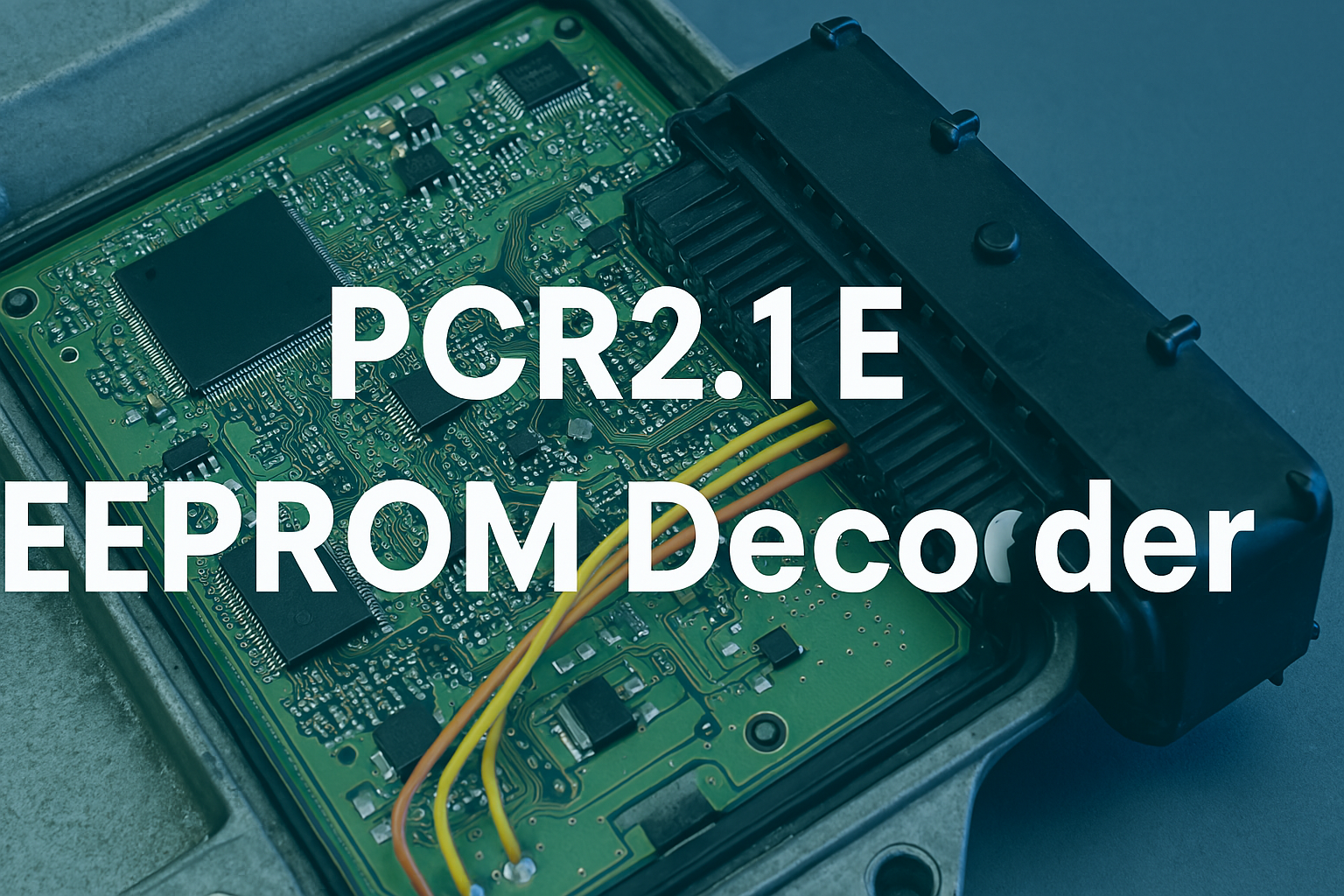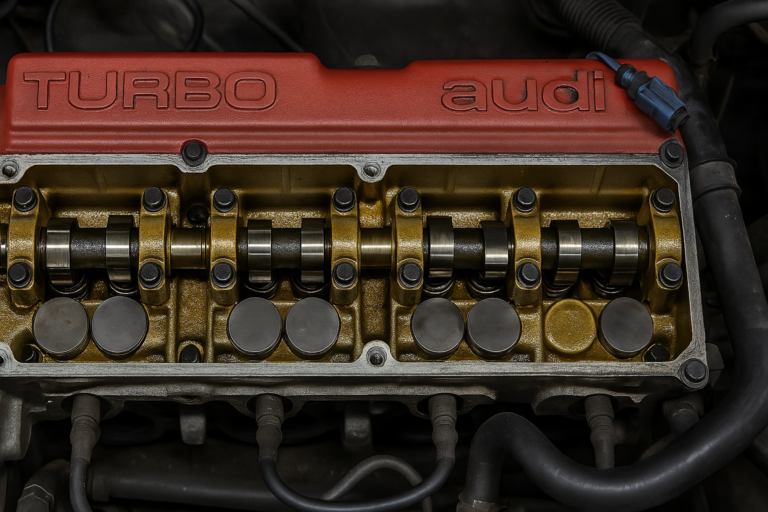pcr2 1 eeprom decoder The automotive industry is a complex world where electronics and software play a vital role in vehicle performance, security, and diagnostics. One key component that has gained attention among automotive technicians, tuners, and enthusiasts is the PCR2.1 EEPROM Decoder. This tool is essential for unlocking, modifying, or repairing the electronic control units (ECUs) of specific Volkswagen, Audi, Skoda, and SEAT models. If you’re curious about how this decoder works and why it is crucial, this detailed guide will walk you through every aspect of the PCR2.1 EEPROM Decoder.
What is a PCR2.1 ECU?
Before diving into the EEPROM decoder itself, it’s important to understand the PCR2.1 ECU. PCR2.1 stands for “Powertrain Control Unit Revision 2.1”, a type of ECU developed by Continental and widely used in VAG (Volkswagen Auto Group) vehicles. The PCR2.1 ECU manages various aspects of engine control including fuel injection, boost pressure, throttle position, and emissions management.
One of the most notable characteristics of the PCR2.1 ECU is its high level of security. Unlike older ECUs, the PCR2.1 features a locked EEPROM, making it resistant to unauthorized tuning or data extraction. While this is excellent for vehicle security, it can be a challenge for tuners or professionals who need to make legitimate modifications. That’s where the EEPROM decoder becomes indispensable.
Also Read: kinh long chua thuong xot
What is an EEPROM in PCR2.1 ECU?
EEPROM stands for Electrically Erasable Programmable Read-Only Memory. In the context of the PCR2.1 ECU, the EEPROM holds critical configuration data such as the immobilizer information, engine maps, VIN number, and adaptation values. Accessing and modifying this memory is essential for:
- ECU cloning
- Immobilizer data extraction
- Performance tuning
- Component matching after ECU replacement
The challenge arises from the fact that the EEPROM data is not directly accessible through conventional diagnostic tools or OBD methods due to its protection mechanisms.
The Role of a PCR2.1 EEPROM Decoder
A PCR2.1 EEPROM Decoder is a specialized tool or software that unlocks access to the EEPROM within the ECU. It bypasses the security mechanisms, allowing a user to read and write data without permanently damaging the unit. The decoding process enables technicians to retrieve the EEPROM dump, edit it as required, and write it back safely.
This tool is especially valuable when performing:
- ECU tuning
- Repairing corrupted firmware
- Matching used ECUs to a new car
- Deactivating or transferring immobilizers
Without an EEPROM decoder, accessing this critical data would often involve physically removing the EEPROM chip and using advanced soldering or micro-wiring techniques.
How Does the PCR2.1 EEPROM Decoder Work?
The decoder works by using a combination of hardware and software techniques. Typically, you need to first read the ECU through Boot Mode, which involves physically accessing the ECU and connecting it to a programmer or interface like KTAG, KESS, MPPS, or other ECU tools that support PCR2.1 Boot Mode operations.
Once the EEPROM data is extracted, the decoder software analyzes the encrypted EEPROM dump. It then performs decryption, and optionally editing or patching, before writing it back to the ECU. This process is designed to be non-destructive and efficient, allowing for rapid diagnostics and modifications.
In some decoder software, you may be able to extract the PIN code, CS (Component Security) data, MAC address, and VIN. These are essential for adapting a used ECU or synchronizing with the vehicle’s immobilizer system.
Applications and Use Cases
The PCR2.1 EEPROM Decoder finds applications in both professional automotive workshops and advanced DIY tuning setups. One of the most common scenarios is when a car’s ECU is damaged, and a replacement ECU must be installed. Since each ECU is coded to a specific vehicle with unique data, it cannot function properly in a different car unless the EEPROM data is adapted.
Another important application is tuning and remapping. By unlocking the EEPROM, tuners can modify fuel maps, boost levels, and other performance parameters to enhance the driving experience.
Some users also utilize the decoder to disable DPF (Diesel Particulate Filter) or EGR (Exhaust Gas Recirculation) features, which may be malfunctioning or causing issues, although this must be approached carefully due to legal and environmental concerns.
Safety and Legal Considerations
While EEPROM decoding can unlock many possibilities, it’s important to use these tools responsibly and ethically. Unauthorized modification of ECU software may void warranties, violate emission standards, or conflict with local laws. Always ensure that any tuning or editing is performed by qualified professionals with a clear understanding of the regulations in their region.
Additionally, incorrect handling of EEPROM data can brick the ECU, rendering the vehicle undrivable. This is why it’s recommended to always create full backups and use trusted tools and software with solid user reviews and support.
Common Tools Used with PCR2.1 EEPROM Decoding
To effectively work with PCR2.1 ECUs, you’ll need more than just a decoder. Here are some common tools and interfaces that support this type of work:
- KESS V2: Good for reading and writing maps via OBD (though limited with locked ECUs)
- KTAG: Essential for boot mode operations
- MPPS V18 or higher: Often used for PCR2.1 EEPROM read/write tasks
- FGTech Galletto: Another option for bench and boot operations
- PCMFlash and Scanmatik: Used for advanced diagnostics and flashing
These tools help extract the EEPROM dump, which is then loaded into the decoder software for processing.
Choosing the Right PCR2.1 EEPROM Decoder
The market has various decoder solutions, both free and commercial. When choosing one, look for features such as:
- Compatibility with your ECU version
- Support for reading/writing EEPROM and FLASH
- Ability to extract immobilizer data
- Active support community or documentation
Some popular decoders include PCR2.1 EEPROM Decoder by VAG Helper, PCR2.1 Tool by Magic Motorsport, and certain custom scripts used with tuning suites.
Advantages of Using an EEPROM Decoder
Using a dedicated decoder for PCR2.1 EEPROMs offers multiple advantages. First, it reduces the risk of hardware damage, since most decoders work through digital interfaces. It also saves time, especially for workshops dealing with multiple vehicles. The decoder also empowers users to take control of ECU functions that are otherwise locked or inaccessible.
Another major benefit is the ability to clone ECUs without needing online dealer tools or special OEM software. This is particularly helpful for used car dealers, repair shops, and tuners working in environments where dealer-level access is not practical.
Final Thoughts on PCR2.1 EEPROM Decoding
The PCR2.1 EEPROM Decoder is an essential asset for automotive professionals working with modern VAG vehicles. Its ability to bypass security layers and grant access to crucial configuration data makes it a powerful tool in diagnostics, tuning, and repairs. Whether you’re fixing a damaged ECU, cloning one for replacement, or enhancing performance parameters, a reliable decoder can save you time, money, and frustration.
As vehicle electronics continue to evolve, the demand for specialized tools like EEPROM decoders will only increase. Investing in quality tools and learning the right techniques ensures safe, legal, and effective use of this powerful technology.
FAQs About PCR2.1 EEPROM Decoder
What vehicles use PCR2.1 ECUs?
PCR2.1 ECUs are found in many Volkswagen, Audi, Skoda, and SEAT models, especially those equipped with 1.6 TDI and 2.0 TDI engines manufactured between 2010 and 2016.
Can I decode a PCR2.1 ECU through OBD?
No, most PCR2.1 ECUs have a locked EEPROM and require Boot Mode access via bench connection. OBD methods generally do not work unless the ECU has been unlocked previously.
Is EEPROM decoding legal?
Decoding itself is legal, but using the decoded data for illegal modifications such as DPF removal or mileage correction may violate regulations in many countries. Always consult local laws.
What happens if the decoding process fails?
If the decoding process is interrupted or incorrect data is written, it can corrupt the ECU. This may result in a non-starting vehicle or diagnostic errors. Always back up data and use tested tools.
Can a beginner use an EEPROM decoder?
While it’s technically possible, decoding PCR2.1 EEPROMs requires some technical skills, including ECU access, soldering (in some cases), and familiarity with tuning software. Beginners are advised to work under guidance or with professional help.
Do all decoder tools support immobilizer off?
Not all decoders support full immobilizer off or adaptation. Make sure to check the feature list of your specific decoder before use.
Is there a risk of damaging the ECU permanently?
Yes, improper use of tools or writing incorrect EEPROM data can lead to permanent ECU damage. This is why using reliable software and creating full backups is essential.







